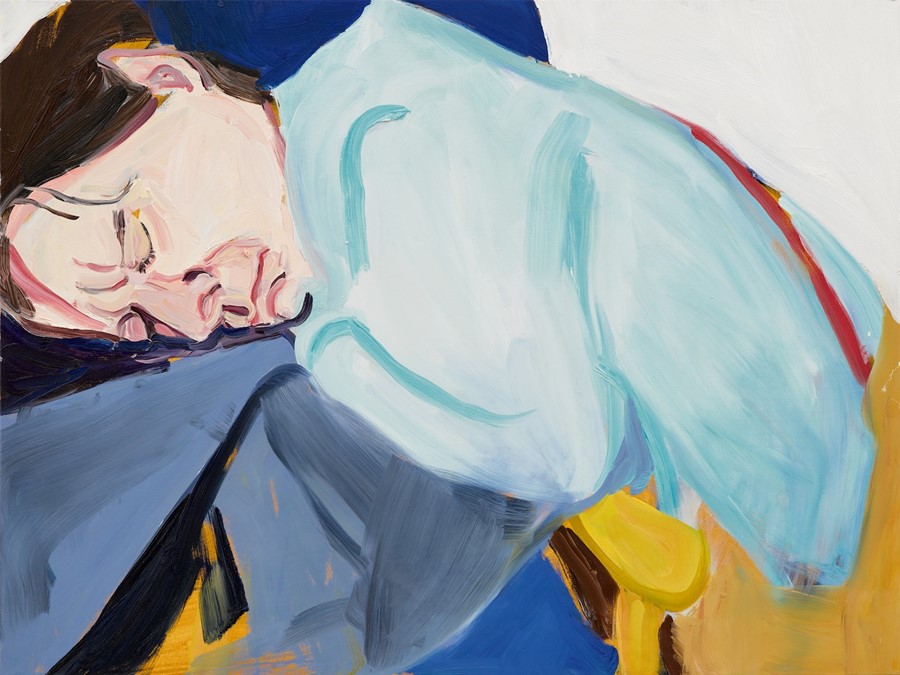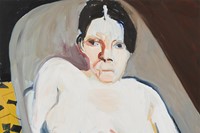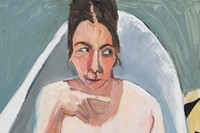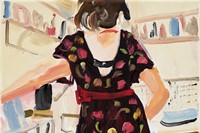As her new exhibition, My dearest dust, opens at Skarstedt New York, Chantal Joffe talks about the solitude of painting your loved ones, grief and motherhood
Chantal Joffe has always painted the personal – for two decades, that’s often meant herself and her daughter Esme (she painted a pensive, pink and orange daubed newborn in Esme (First Painting) just three weeks after giving birth). Joffe lavishes stark, lined faces and fleshly nude bodies with vivid chunks of colour – chlorophyll greens and greys peep through to unsettle their gentle domesticity and intimacy.
In My dearest dust, Joffe’s new show at Skarstedt New York, there’s a new hue: the sunny yellow of her bedspread. After a condensed period of loss – the deaths of both her parents and brother-in-law – as well as Esme’s departure from the family home, the “crazy ecstasy” of the shade began to dominate her paintings as if in a “mad contrast to the kind of life I had been having that winter,” Joffe explains over the phone ahead of the opening. Stocking up on huge tubes of lemon, cadmium and lead-tin yellow, she entered an equally ecstatic frenzy of work.
A dynamic contrast weaves through the series. There are Joffe’s large-scale paintings – self-portraits where the artist stares blankly in the bath, sitting gloomily on the edge of that yellow bed – her often naked figure is crumpled, raw and cast in a cold light. In others, her partner Richard sleeps and rests. Then there are the smaller scale works of Esme, who appears to sweep into the home with a brightness that fills the frame – her floral dress in the kitchen, stripy socks on the sofa, or afoot a heaving pink cherry blossom – she’s bold, solid and self-contained. But rather than portraying the disappearance into grief, in taking a hard look at her pain, Joffe solidifies it. “It’s like all grief,” Joffe says. “You contain it within you.” My dearest dust does not present a transition of life force; instead, in the act of looking at herself with such clarity, she makes a life raft of the lived experience for us all.
Below, in her own words, Chantal Joffe talks about My dearest dust, its title taken from a 1641 elegy.
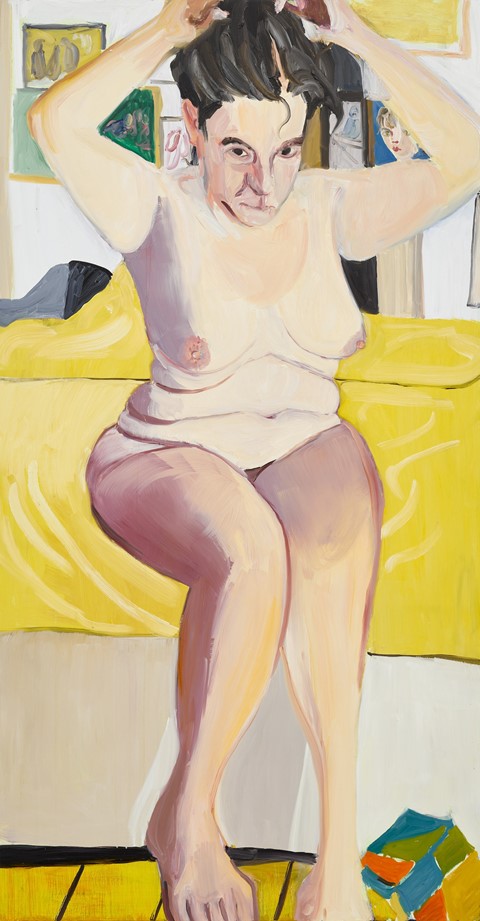
“The works came at a period of painting that was quite rare – they felt very natural, one grew from another, very fast and very loosely. Normally, you have moments when you feel completely in it but then it goes. This lasted a long time. I was almost weirdly ecstatic. It’s a terrible thing you do, when you bump into another artist or writer in the street and say, ‘I can’t believe it, it’s just so great. It’s the best feeling.’ We’re always chasing that feeling.
“I didn’t set out to make paintings about [Esme moving out] but when I looked back at them, I thought, oh, yeah, there’s a kind of grief as well. It’s a strange thing to be making paintings in a state of ecstasy when your life isn’t so ecstatic. But it’s where work is best – where you’re thinking about hard stuff but it transcends, or transforms, into painting. You can only ever paint the exact place you’re in when you paint.
"Esme suggested the title because she’s really into poetry. I live in a really old house – it’s not very tidy – and old dust comes through the floorboards. I've lived there for 24 years, and it’s full of pictures and paintings and the dust of my mum, my dad, and my brother-in-law. So there’s a sense of me sitting in that dusty house dreaming of all these people.
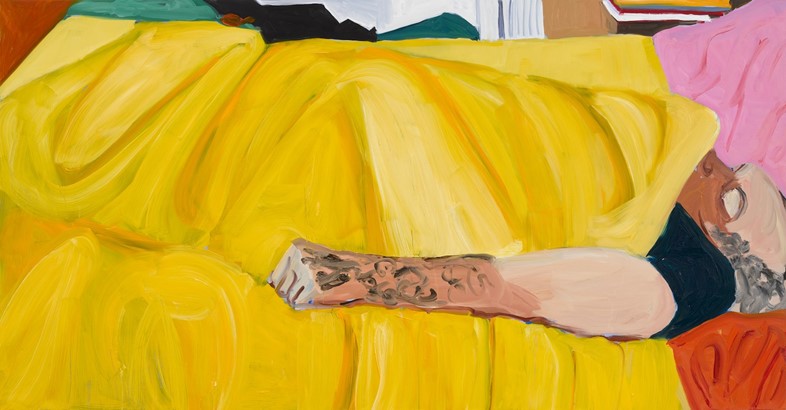
“It’s a funny thing to bring up a child and try to be a painter because painting is quite a selfish thing. You want to be on your own doing it and any other thing in your life takes you away from that. It’s like having a lover – which is a weird thing to say. You’re partly running away from your child to make a painting, but then I’m also painting her, and the experience of being her mum. I think all artists have that – you’re locking yourself in a room to be on your own but you’re painting the spectacle of life. In my bedroom there are endless paintings of Esme, and by her, on the mantelpiece, pictures she’s made and given me over the years. And your child is always in your head all the time anyway – I guess it’s trying to also paint that experience.
"It’s also age – I’m 54. These are the things that happen to all of us around these years. You know, you lose parents, you lose friends. The older you get the more people you lose. But [these paintings] are not sad, they’re not depressing. Painting is always about engaging with life – I sound like a crazy evangelist – but it’s about being alive, and trying to register what that is.
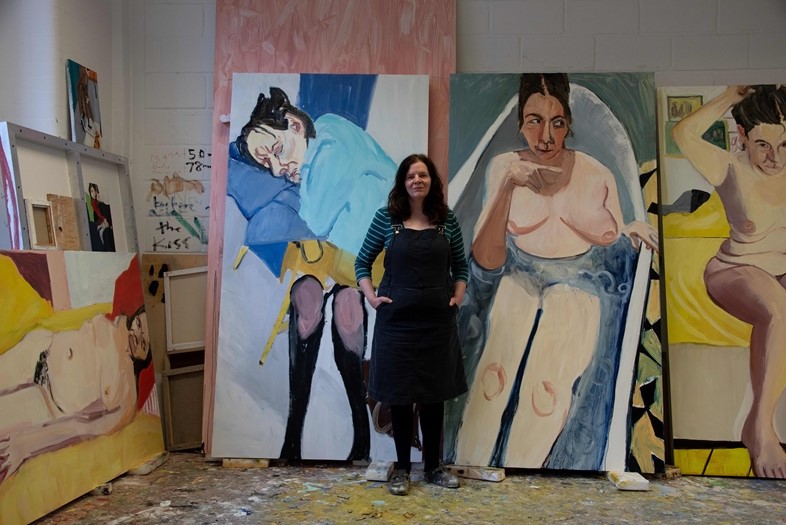
“I had Esme when I was 34. And I lay in the hospital thinking: 20 years from now she’ll be grown up and that will be that – it’s sewn into them. The thing about children is – and this is true from the moment they’re born – you can do so much, you expand – like Louise Bourgeois’ giant spiders [Maman (Ama), 1999]. You grow giant in expanding to raise them, literally.
“As she’s gotten older, I’ve had to let her own her own image and her own depiction, though that was hard to let go of. But it is fair. She’s an artist and a songwriter and a singer and she needs to own herself. So she’s got smaller in the pictures, they’re back views and eyes averted. She’s moving away from me and my scrutiny, I guess.”
My dearest dust by Chantal Joffe is on show at Skarstedt New York from 8 May – 15 June 2024.
